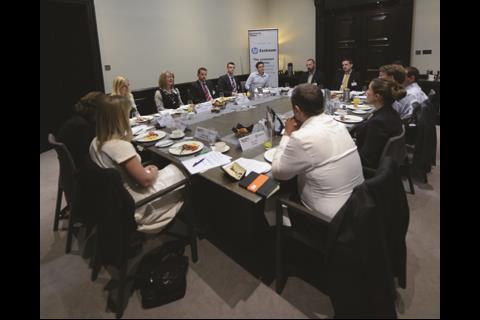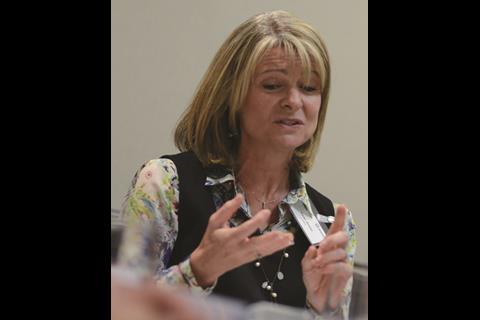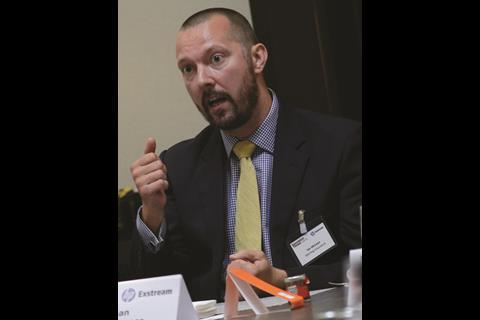From the use of social media to the replacement of ageing computer systems, delegates at a recent Insurance Times roundtable voiced concerns about how insurers must catch up with customers’ use of technology, or risk becoming irrelevant and losing business
1) How is the industry coping with the explosion of channels they can use to interact with customers?
Twenty years ago, insurers only had three main ways of communicating with policyholders: phone, fax or mail. Today there is a dizzying array of digital communication channels, and customers demand contact on their terms.
Hiscox group digital manager Ronnie Brown says: “People’s expectations are heightened by other industries. They ask: ‘Why can’t you do it like Amazon?’”
Allianz UK head of direct insurance Jon Lott says: “The industry has tended to lag how customers are using technology.” When the industry does catch up, customers respond positively, Lott says. One way to tackle this demand is placing electronic policy documents in online portals so customers can access them at will.
But it is important not to forget traditional methods of communication, particularly in insurer-to-broker interaction. NIG head of marketing Alison Barlow says: “Yes, digital is there, but the traditional channels shouldn’t be neglected.”
We say …
Customers want better and more varied communication from insurers but the industry should not
simply copy other industries’ approaches
2) How should the industry interact with customers on social media?
Social media use has surged and many companies have started interacting with their customers on Facebook, Twitter and others.
Insurers and brokers find it difficult to engage with customers outside renewals or claims, so naturally want to get involved.
Hiscox group digital manager Ronnie Brown says: “When it comes to claims and talking to people about customer service issues, [social media] seems to be a good way for people to get in touch with you instantaneously.”
But many agreed that the industry also needs to know where to draw the line. For example, it would be inappropriate for an insurer to butt into a forum discussion to try to sell a policy.
LV= head of general insurance customer engagement Karen Sharpe says: “We respond to direct messaging and comments on social media sites and we use our live chat too. What we don’t do is step into forums or blogs or those kinds of conversations.”
We say …
While social media can be a powerful tool for insurers, they need to tread carefully. They should use social media only where appropriate and effective
3) Does the industry welcome the trend for publishing online customer reviews and what are the implications?
One aspect of the digital customer journey that particularly interested roundtable participants was the prospect for TripAdvisor-style reviews of insurance products.
Aviva is the first UK insurer to publish customer claims reviews for its home and personal motor products on its website. Price comparison site Comparethemarket also plans to incorporate buyer reviews.
LV= head of general insurance customer engagement Karen Sharpe says: “As an industry we are way behind on [customer reviews]. Why aren’t we talking to TripAdvisor and saying: ‘Why don’t you do this for insurers?’”
Bupa group social media manager Charles Stanton believes ratings will improve customers’ understanding of insurance.
He says: “You need to understand how customers have experienced the service, the claims process - the whole journey. At the moment it looks like an expensive outgoing with nothing to show for it.”
We say …
Customer reviews are a bold move that will improve the industry’s image and performance. But it should be remembered that review sites are open to abuse
4) How are insurers’ legacy systems affecting their digital dealings with customers?
Many insurance companies’ operations are underpinned by computer systems up to decades old. Insurers have been patching up these old systems, but the consensus around the table was that this cannot continue.
NIG head of marketing Alison Barlow says: “There was almost an acceptance that: ‘I’ve got a legacy system. We can’t change it. It is too expensive’ Now it is not good enough to say: ‘We can’t change the legacy system’.”
Companies are realising that old systems are hindering their response to customer needs and they risk losing business to newer rivals.
Hiscox is overhauling its systems. Group digital manager Ronnie Brown says: “It will make us more agile from a customer engagement point of view.We will be able to collect better data and respond more quickly.”
But Allied World Assurance European chief operating officer Michael Walsh warns: “It is dangerous to say it is just an IT investment. Everybody has to be brought into this new journey.”
We say …
Insurers’ creaking computer systems are often the butt of industry jokes, but they are no longer a laughing matter
Hosted by comedian and actor Tom Allen, 34 Gold, 23 Silver and 22 Bronze awards were handed out across an amazing 34 categories recognising brilliance and innovation right across the breadth of UK general insurance.






















































No comments yet